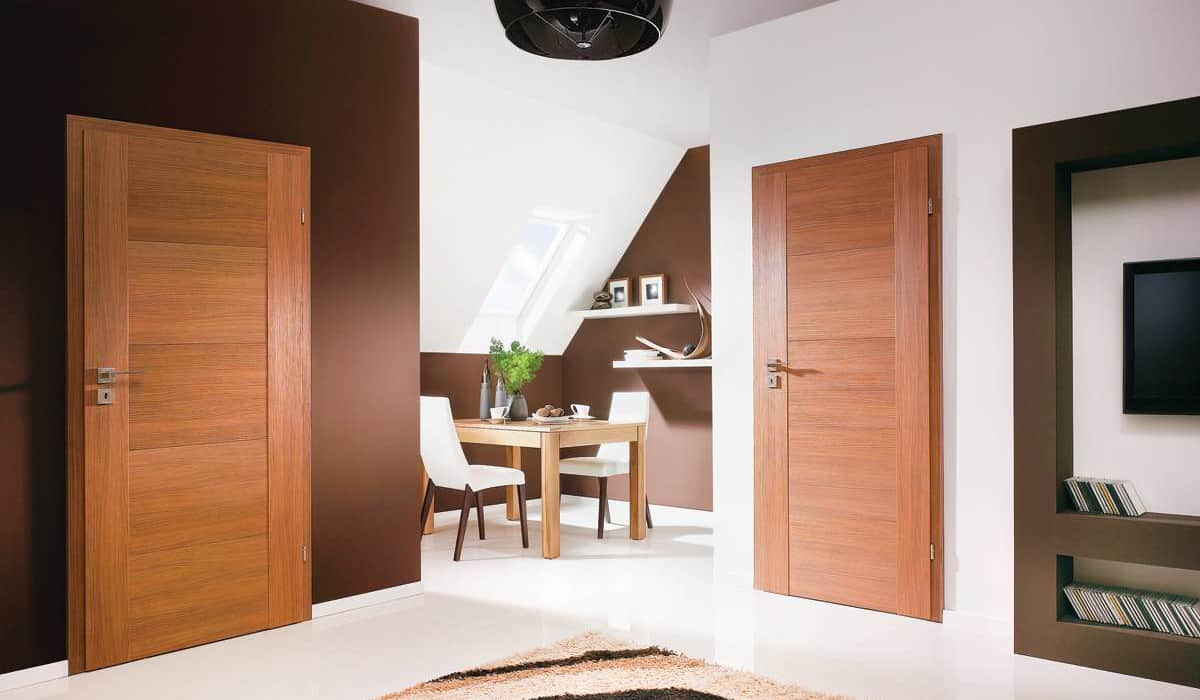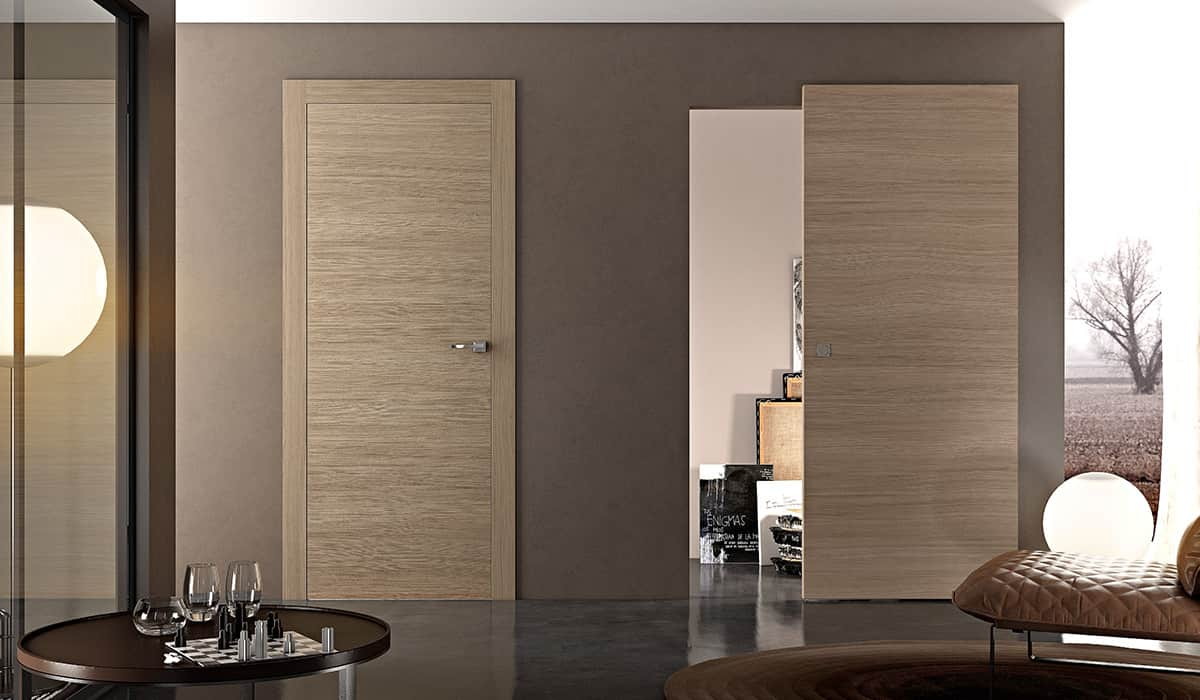Various door design types including MDF and wood are symbols of beauty and protection at the same time—those that appear after the architect's scope and before the interior designer's scope—in the design of commercial and residential structures. Due to the perception that bespoke doors are excessively costly, they are often not made. Enter MDF (Medium Density Fiberboard), a cost-effective, long-lasting, and appealing replacement for custom-built doors. MDF is a kind of engineered wood product made from refined wood fiber, resins, and waxes, which results in a product that is sturdy, durable, and machinable. Beautiful door designs have a whole new universe of possibilities thanks to MDF doors. You may now combine style and sustainability by choosing MDF doors in this period of growing focus on ecologically friendly materials. This lovely isotropic product has no grain, which means it is less likely to break and more immune to warping, splitting or cracking than standard woods like Poplar or Pine. MDF is easy to work with and paints wonderfully, enabling a consistently smooth finish. This double-refined wood fiber product is very "green" since it comprises at least 86% recycled material. The conventional stile and rail technique, in which the stiles and rails are coped and stuck, and then clamped together around the panels to produce the door, may be used to make MDF doors. This makes it possible to have an architecturally sound door, but it sometimes limits the number of alternatives or raises the price of customized solutions. 
- Flown Doors
This approach involves cutting a slab of MDF that is either 1-34" or 1-38" thick to the size of the door, for instance, a 3'0" x 7'0" dimension, and then routing the panel's profile into each face of the door in the required arrangement. This technique DOES NOT CREATE AN ARCHITECTURALLY CORRECT PANEL, WHERE THE LEVEL OF THE PANEL SITS BELOW THE LEVEL OF THE RAILS. It ONLY CREATES A FULL THICKNESS PANEL.
- Continuous Lamination
The door is made in two sections using this process. A wood edge channel is grooved into the face of each half of the door to receive the wood edge, and the stiles and rails of each half are attached using the cope and stick technique. The two-door halves are then face bonded together over the Poplar wood edges to create a solid engineered door after a Poplar wood edge is put into the edge channel. The complete length of the stiles' keyed poplar wood edges adds stability, longevity, and screw-holding strength. This keyed wood edge is also put into the top rail of a pocket door or barn door to increase screw holding capacity. One may alter the door's size and the rails' width for little to no extra cost by using the continuous lamination technique of construction. Designers may use their imagination to incorporate custom-sized glass, mirrors, or applied moldings to their door designs to improve both the aesthetics and the location of the doors. The outstanding stability, paintability, and machinability of MDF doors make them the ideal material for producing higher-quality and more reasonably priced paint-grade doors than what the industry has typically seen. Let's now list some additional advantages of MDF doors. 
- Adaptable Designs
Doors now come in a variety of designs. Now that stile, rail, and panel configurations can be customized, architects, general contractors, and building owners can design distinctive, unique doors that are engineered and produced to the highest standards. Your project can become truly unique by using your own design. Any door can be enhanced to serve more than just its intended purpose. Instead of serving as a barrier between rooms, doors can be a focal point. Because of this, it's critical to be able to tell apart the various MDF door design options and how they function in the marketplace. Let's start by examining a few design elements. MDF doors give you the option to alter the width of your rails to satisfy specific machining needs to fit any specialized hardware you may specify.
- Glass is stuck
Any panel may be replaced with glass, which is also available in a variety of adhesive profiles. Some MDF doors also include options where each aperture has its own piece of glass, giving the door an expensive personalized appearance. Muntin bars typically have a face size that is 1/2" broad plus the sticking width. There are times when compression glazing is an option.
- Door Louvers
Louver doors come in a variety of sizes and layouts, making them perfect for both residential and commercial applications. A more premium, opulent appearance is produced by wider louver blades.  Choose from a variety of louver door choices, including fake or fully vented louvers. Where ventilation is a concern, think about fully vented louver doors or faux louvers where design is more important than ventilation. Depending on whether you choose swinging louver doors, bypass louver doors, or pocket louver doors, some manufacturers will adjust the panel arrangement and the stile and rail lengths. For technical details on mirror insert alternatives, airflow requirements, and louver blade diameters, contact your manufacturer. In rare circumstances, certain manufacturers may modify the louver blade's size and angle to satisfy particular free air space requirements.
Choose from a variety of louver door choices, including fake or fully vented louvers. Where ventilation is a concern, think about fully vented louver doors or faux louvers where design is more important than ventilation. Depending on whether you choose swinging louver doors, bypass louver doors, or pocket louver doors, some manufacturers will adjust the panel arrangement and the stile and rail lengths. For technical details on mirror insert alternatives, airflow requirements, and louver blade diameters, contact your manufacturer. In rare circumstances, certain manufacturers may modify the louver blade's size and angle to satisfy particular free air space requirements.
- A glass door
For certain MDF doors, the paneled pattern may be changed with one or more pieces of clear, frosted, ornamental, or specialty glass. Glass is a wonderful addition to any door design. MDF glass doors are a wonderful alternative for business projects needing transparency or lighter as well as for residential projects wishing to add natural light or a highlighted aspect to a living area due to the variety of various glass options available. A broad range of TDL and SDL (Simulated Divided Lite) designs are also offered by certain manufacturers in addition to glass paneled doors to meet the needs of a number of applications. You may freely modify or adjust any design to match your technical requirements, depending on the manufacturer. Acid etched frosted glass, one of the most popular choices, is of the best quality and produces the ideal translucency for residential and hospitality buildings. White laminated glass is an additional choice for an opaquer appearance. 
- Design Elements
MDF doors come with customizable panel arrangements and rail dimensions. Compared to molded skin doors, which have a defined elevation and dimensions, MDF doors are distinguished by this.
- Common Door Designs
MDF doors come in a variety of heights, such as 6'8, 7'0, and 8'0", and in typical widths ranging from 1'0 to 4'0". Due to the fact that many MDF doors are made to order, specialized sizes and layouts are available. There are three different door thicknesses: 1-3/8", 1-3/4", and 2-1/4." Doors with MDF wood panels may be fire-rated. All MDF wood panels may be changed out for glass. Even a little increase in height—a couple of inches—can significantly alter how a door feels. Doors that are 7'2, 7'3", 7'4", and 7'6" tall are just as common and available at ordinary prices as those that are 6'8", 7'0," and 8'0". Many premium projects that don't have the ceiling heights for 8'0" tall doors are selecting 7'6" tall doors because they are ideal for projects with restricted ceiling heights.
- Designs for Standard Glass Doors
Individual glass units are split by muntin bars. They provide a broad selection of unique alternatives for both residential and commercial settings to bring natural light or a highlighted design. A panel or panels may be changed with transparent, frosted, or specialty glass in almost any design.
